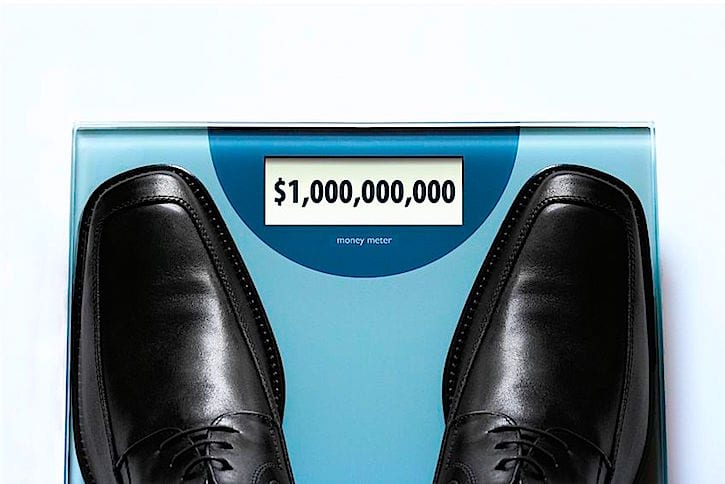How Much Is Chiropractic Worth? This is the question every chiropractor asks at least once in their chiropractor career. For some, this question is asked multiple times during the life of their business. For others, it’s a question that needs to be answered as quickly as possible.
Although the question “How much is chiropractic worth?” is quite common. (or more specifically, “How much is my chiropractic treatment worth?”, I’ve been surprised by two aspects surrounding this important investigation. The first is how few chiropractors know the answer to this question at any given point in their career (including when they are in the “last stages” and within a few years of ideal retirement age). The second point of confusion is that the calculation of the value of a chiropractic practice is simplistic and has always been based on a certain percentage of gross income.
For example, I recently spoke with a young doctor a few years out of chiropractic school who researched 37 different practices in an attempt to find one to buy. When I asked him why he saw so many exercises but didn’t actually buy them, he reasoned that they were all “overpriced” based on the percentages he learned in school. Questioning him further, I decided to ask him a key question:”How much is chiropractic treatment worth? “
Potential buyers come up with a percentage range that I’ve heard a dozen times before. But unfortunately, apart from his superficial calculations, he failed to come up with any reason. In other words, he simply looks at the asking price, the average of the annual collection, and does the math, and in any case, he walks away and looks for another “bargain.”
For this buyer, the collection averages cause him to potentially lose some good practices that don’t fit his poor formula. vice versa. Sellers will misprice their practices based on the same formula as a missed sale.
Should Gross % of Collections be used?
I believe this young chiropractor made the mistake of using the total percentage of the collection as the sole determinant of chiropractic value – but he’s not alone in making that mistake. There is much more to evaluate before deciding whether a business is priced rightly or overpriced.
That said, the overall percentage of collectibles isn’t a completely useless number. On a very, very broad scale, it can show the average selling price of a typical chiropractic. But that’s akin to saying the average US income is $__. Of course, some people are average, and many are well above or well below average. Overall, it might tell you that our country has a higher average income than other countries. But it doesn’t tell you much about how to determine your personal income.
In the same way, the gross receipts average can tell you that chiropractic treatments typically sell within a certain percentage (a common number used is 60-80%). If you compare our sales to those in the dental industry, you’ll see that chiropractic often sells for less than dental offices. If you compare our sales to those of other industries, you will see that chiropractic sells for more. But again, that doesn’t tell you much about your practice.
Why Gross Collection Percentages Can Be Deadly Wrong When Evaluating Your Business
The real danger of using approximate collection percentages to answer questions “How much is chiropractic worth?” Here’s the thing: it can lead you in two very different directions very quickly – even with the same collection image. Here’s what I mean:
Take the example of two chiropractics earning $500,000 a year. Practice A has extremely low profit margins because it pays above-market rents, has a large number of employees, has a large loan for equipment, and typically has quite high overhead, approaching 70%. Contrast this with Practice B (which also collects 500K per year), but is a lean average profit production machine with 35% overhead.
Which practice has higher value? Based on the rough collect percentage formula, everyone will have the same value because they all collect the same stuff. But obviously the lower overhead, higher net practice will be more valuable. This is exactly why an approximate percentage of the collectible should be used to determine value and then price. (Which is why our young chiropractor friend might forgo some great deals if he continues to use the formula.)
So how exactly is the practical value of chiropractic determined?
By belittling the approximate percentage of collected formulas, I don’t mean to imply that evaluating chiropractic is an easy process that just needs better formulas or measurement tools. It’s not like you can determine your business value just by stepping on a scale like you can determine your weight.
Instead, the fundamental foundation of value begins with your business revenue or profitability. In short: the higher the profitability, the higher the value.
Having said that, it’s important to realize that there are many other factors that can directly affect and contribute to the ultimate value of a chiropractic business, not all of which are financial. After all, market value is simply the price a willing buyer is willing to pay, and those decisions are based on many factors—some of which are tangible, logical, and calculable, while others are slightly less important.
Of course, practicing profit is the most important component of building value. If there is not enough cash flow to cover the bills, including practice debt, and provide a reasonable salary to the buyer (and provide a reasonable ROI on the initial investment), then the real estate (possibly) is worthless, and the equipment.
Practice growth is also important and affects value. If one grows at 10% per year and the other declines at 10% per year, two practices with the same gross and net income will have different values. While you often won’t be able to capture “future potential” in today’s sale price, rest assured it has a huge impact on buyer’s desire to buy and ultimately real value.
Transferability to a new owner is important because it forms a significant part of goodwill. Some other influencing factors include location, facility appearance, competition (or saturation) of chiropractors, equipment value, number of active patient files, remaining staff, and the owner’s transition period after sale.
To sum up, profit is crucial to the establishment of value, but it would be a big mistake to ignore the above factors related to the value of the whole practice.
Putting the Numbers on Your Chiropractic Value
So, with the above in mind, how do you accurately answer the question “How much is chiropractic worth?” Chiropractic evaluation is not a simple matter, but it is an important issue that too many chiropractors ignore.
In fact, when talking to chiropractors who are two or three years or more away from retiring or transitioning to practice, DC often doesn’t understand the value of their practice. Their reasoning was that they would wait to assess costs until they were ready to transition.
While this is certainly a strategy that can save you time and money, it doesn’t help you figure out the value of your practice. As a result, you move forward on the road to retirement or transition with no real expectation of the value of the key assets in your retirement portfolio.
Clearly, the consequences could be severe. You overestimate and you end up working an extra year or two (or five) to make up for what you think your practice is worth. If you underestimate, you may retire early.
Chiropractic Assessment: A Happy Medium
Fortunately, there is a happy medium called Chiropractic Estimates.
Practice Valuation can be a great tool to help you estimate the value of your practice to determine its value for potential sales, future sales, financial planning, negotiations with partners or potential buyers, and many other uses. Also, a chiropractic practice evaluation can often be completed faster and for less money than a formal evaluation because it is limited in scope compared to the evaluation. Unlike residential or commercial building appraisals, we do not have to go on-site to “inspect” your practice, but can value your business using the standard business valuation formula banks use when lending money to interested buyers to purchase your practice.
In this regard, a valuation becomes an excellent “first step” when planning to sell your chiropractic. Or — if you’re on the other side of the fence — a chiropractic appraisal can help you as a buyer determine whether the practice you’re considering is a good deal and whether you should buy chiropractic.
A chiropractic valuation allows you to effectively answer the question, “How much is chiropractic worth?” Do not use error-prone “gut-check” guesses or other equally inaccurate methods. Because of the cost savings compared to a formal appraisal, a hands-on appraisal can be used earlier while still giving you some important details about the value of your business assets.
After all, no one wants to pay $5,000 for an appraisal when the transition is 10 years away. Or most DCs don’t want to pay for multiple assessments even if they’ve been overdue for a year. Valuation, on the other hand, can be used as a tool earlier in the practice and, because of its affordability, can be performed multiple times to measure the value of the practice until the transition period when the owner is ready to retire.
When should I have a chiropractic evaluation?
Several times in your chiropractic career, a chiropractic evaluation has been used as a solid answer to the question “How much is chiropractic worth?” question:
- If you are planning to sell your practice within the next 3 yearsIt then makes sense to determine what it’s worth now (or soon).
- If you have a partner or potential buyer interested in purchasing your practice, Then the Chiropractic Practice Assessment will allow you to meaningfully advance that discussion. After all, everyone is likely to show interest — until they hear the price.
- If you need help with financial planning And the value of your practice is an important part of your retirement or financial portfolio, then it’s natural to wonder how your business might contribute to your exit strategy.
- If you are considering a change of pace or career — get a valuation advance. Rather than slowing down your business (and possibly reducing its value) or stopping your business altogether (getting nothing but a headache), a valuation will help you determine what your business is really worth – which could have consequences for your business Significantly influence a better decision.
For a deeper understanding of the value of chiropractic or how to maximize the value of a chiropractic sale or transition, consider attending one of our events Free webinar on this topic (click here to learn more)!


